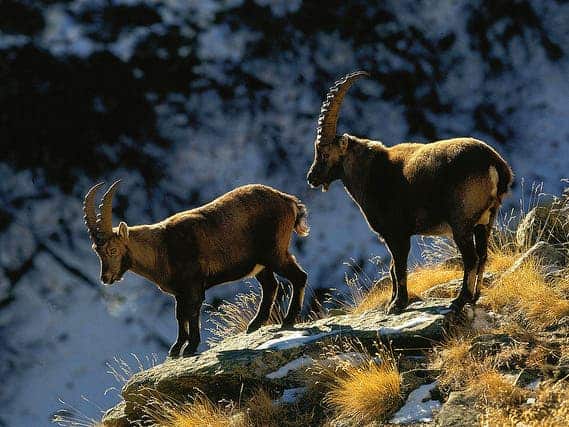In a mountainous setting, you’ll find the most species somewhere around mid-altitude. The consensus is that further up there is less oxygen and the temperature is lower, while further down factors like human disturbance hinders diversity. Swiss researchers who thoroughly modeled biodiversity in a terrain that actually mimics a mountain, not an ideal cone or hill, found a different explanation which seems to be more important that temperature, humidity or anything else. It’s all about the topography of the terrain, and whether or not it allows for niches to become connected. The findings could prove extremely important in gauging the future impact of migrating species to higher elevation as a result of climate change.

In a patch of land, the number of species that can live in harmony, let’s say, depends on a number of factors. For instance, a large area will most often than not host many more species than a smaller area though the conditions may be the same. Keeping this in mind, researchers from the Institute of Evolutionary Biology and Environmental Studies at the University of Zurich transposed what we know about biodiversity in the flatlands to the mountainous terrain.
“In mountainous terrain, peaks and valleys are isolated habitats, like islands in the ocean, whereas mid-elevation sites form well-connected patches,” explains Enrico Bertuzzo, a researcher at the Ecohydrology Lab at EPFL and first author of the study. “Given that habitat area and connectivity foster biodiversity, whereas isolation favors the dominance of few species, we hypothesized that topography itself could be playing a key role in regulating how biodiversity varies with elevation.”
Previously, these sort of studies were modeled on ideal surfaces, like a cone. These, however, failed to grasp the richness and complexity of an actual mountainous terrain. Bertuzzo and colleagues painstakingly considered all its complexity, then set loose hordes of virtual species in a computer simulation. Each species had an optimal altitude where it thrived, When the researchers let the virtual species compete for habitats on landscapes modeled on real-life ones, their simulations showed that topography alone was enough to explain biodiversity patterns observed in nature. “Other factors, like temperature, productivity, etc., are obviously also important, but they inevitably act on top of the unavoidable effect provided by the landscape structure,” the researchers note in Proceedings of the National Academy of Science.
The findings are very important given today’s context. As the planet heats, many species — both animals and plants — will migrate to a cooler habitat, which can be further north or south of their current position or at a more elevated altitude. But what will they find there? At mid-altitude, more competition if the terrain allows it, i.e. no peaks or valleys. It’s not important for migration models to take the present findings into account.
“Local species richness is found to be related to the landscape elevational connectivity, as quantified by a newly proposed metric that applies tools of complex network theory to measure the closeness of a site to others with similar habitat. Our theoretical results suggest clear geomorphic controls on elevational gradients of species richness and support the use of the landscape elevational connectivity as a null model for the analysis of the distribution of biodiversity,” the conclusion in the study’ abstract reads.


